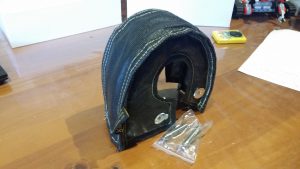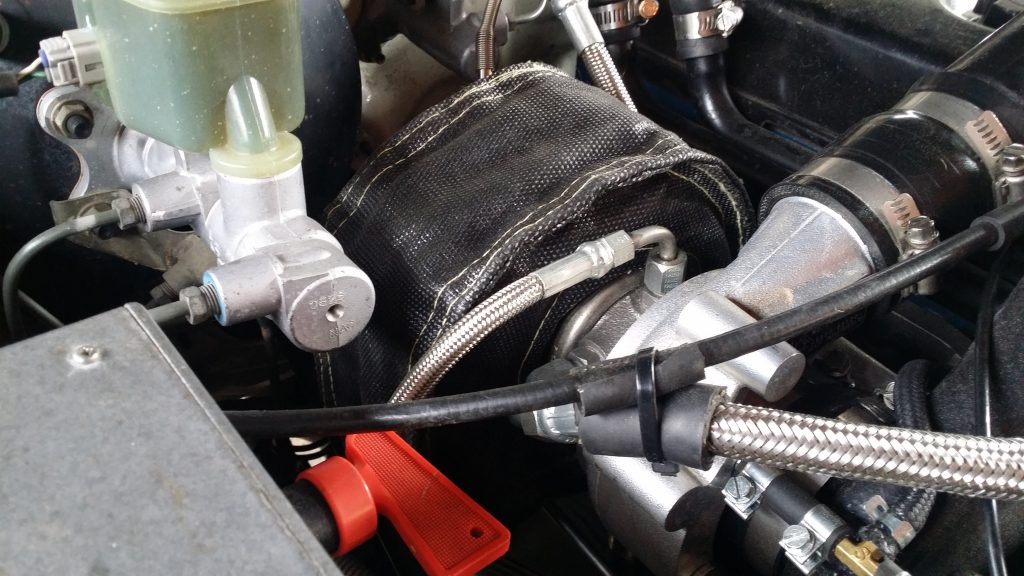Since rebuilding my old Toyota Hilux engine last year and fitting a turbo I’ve never been happy with the heat shield that was supplied in the kit.
This shield would attach to two studs on the brake booster assembly and hang their keeping the heat from the turbo away from the master brake cylinder. However the weight and orientation of this bracket did not give me confidence that it would survive under the bonnet on a rough road. To put it blunt there wasn’t enough mechanical support. If it were to fail it would potentially cause damage to the braking system which is counter intuitive.
 So instead I went looking for a better solution. After a bit of research I found suppliers for “Turbo Blankets”. These blankets are made from fire proof materials and are designed to wrap around the turbo exhaust turbine and keep the heat within the turbo and out of the engine compartment. It relies on the exhaust gases taking the heat out of the engine bay and into the exhaust. So one was duly ordered from an online supplier which arrived promptly.
So instead I went looking for a better solution. After a bit of research I found suppliers for “Turbo Blankets”. These blankets are made from fire proof materials and are designed to wrap around the turbo exhaust turbine and keep the heat within the turbo and out of the engine compartment. It relies on the exhaust gases taking the heat out of the engine bay and into the exhaust. So one was duly ordered from an online supplier which arrived promptly.
Fitting a turbo blanket is fiddly, you will feel like you need three hands. The two springs that wrap around the exhaust manifold and pipe seem to have a mind of their own. Perseverance and a little Zen may be required.
So after a few scun knuckles and small injuries I managed to get the turbo blanket fitted.

It’s worth spending a little time making the edges neat, the better the fit the better the heat shielding. What I like about this arrangement is the weight of the blanket is off the brake booster assembly.
The turbo blanket came with a warning that it should be replaced if removed. Inside are silica based materials that fuse together when heated. So moving or breaking these materials by removing will see it’s effectiveness reduced. So I’ve ordered a spare that will sit in my cupboard if I need to do any work on this in the future.
So the question is how well does it work? Well getting the turbo hot in a diesel hilux requires hills and load. I’m lucky to have a long steep grade not too far from my home where I can make the turbo work hard for some time. So starting at the bottom of the hill we simply pushed the old girl to full boost and held her there until the EGT hit max (550degC), then I could try to pull over and make a measurement.
Now the trick is the EGT cools down really, really fast from this temp so you’ve got to be quick. When I lept out of the cab having stopped in a parking bay with my phone in hand the EGT was already down to 450 degC and the car had been driven for 20 mins in normal traffic beforehand.
I’d think you agree that the brake booster is not in any danger of being overheated by the exhaust turbine. So now I’ve just got to wait for some hot weather to arrive and see if I can borrow a Flir temp camera and make some better measurements. Cant’ wait to see how this goes.
